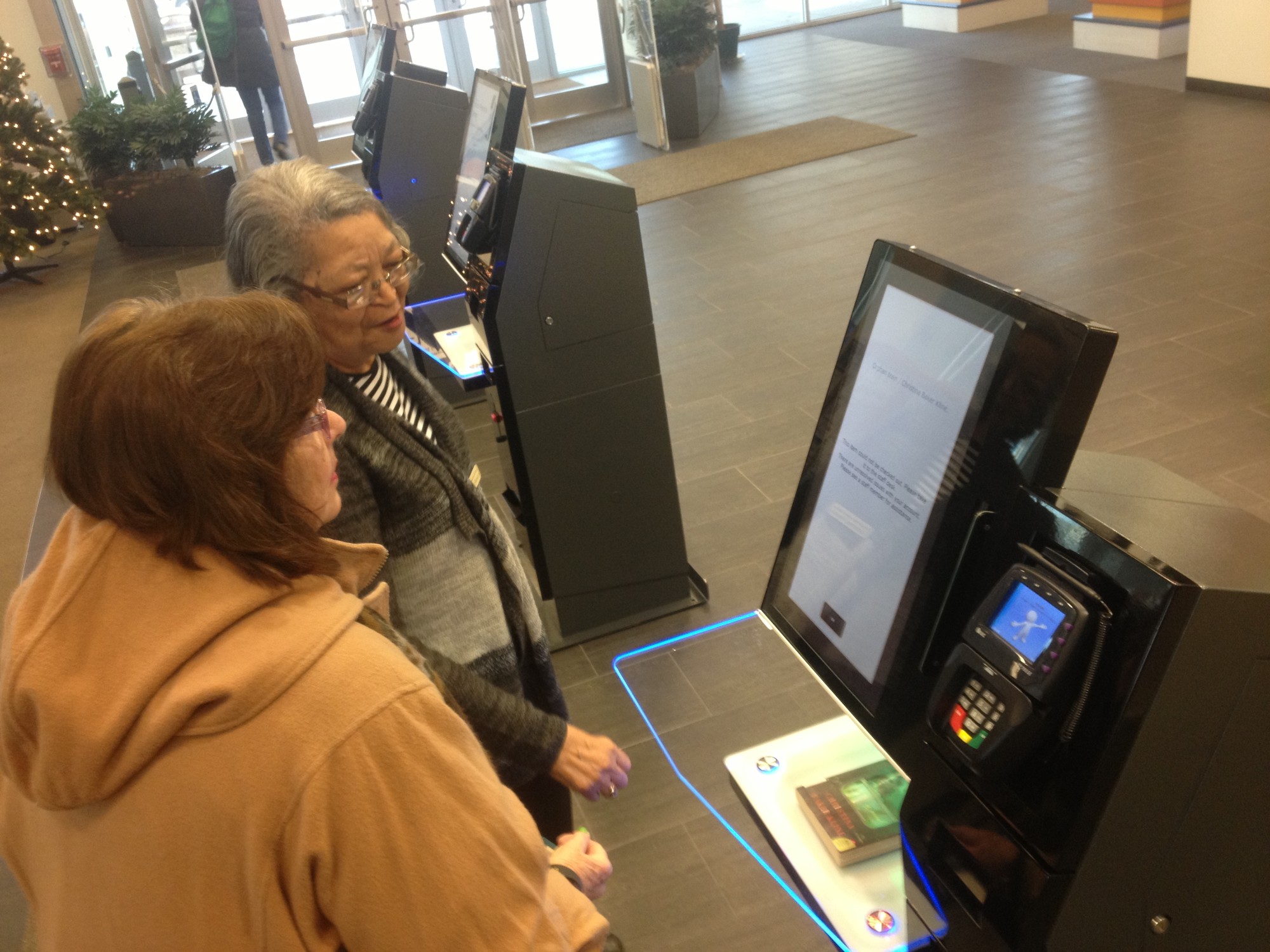Elmont Library installs automated service system
Patrons at the Elmont Public Library paused at the new checkout machines near the building’s entrance as employees at the customer service desk kept a watchful eye for any signs of confusion.
“This is my second time using them,” said Kevin Lynch, of Bay Ridge, as he placed a small stack of books in the scanner. “I find it handy. For an older guy, it’s not too hard.”
The machines are part of a $260,000 self-check circulation system introduced in November. It includes an automated kiosk where books, DVD’s, CD’s and audio books can be checked in. About 300,000 of them are checked out and returned each year. A conveyer belt grabs the returns and automatically sorts each into carts that librarians will take to the proper sections to be returned to their places on the shelves. Another, lower, self-check machine is located nearby for kids to use.
The system was completed in November. The large circulation desk was removed to make way for it and a new, smaller customer service desk. Sharon Roberts’s title changed from circulation manager to customer service manager, which means she and her staff will eventually spend their time helping visitors with everything other than checking things in or out, although customers require some assistance in the transition period. Roberts said most people seemed to be adjusting.
“It’s going to make our lives easier once people get into it,” she said. “People seem to be enjoying it.”
The system is the first of its kind in Nassau County, though the technology has been implemented in other libraries around the country, according to Roger Podell, the library’s director. “There’s a real committment to modernizing libraries,” he said. “Nassau County is behind. This is an attempt to stay on the cutting edge of technology for the library.”
The 8-year-old building, which serves about 1,000 visitors per day, has been making other renovations: a 150-square-foot Early Childhood Learning Room opened in May with software on three computers geared towards children between 18 months and 7 years old. It cost approximately $35,000, $10,000 of which was covered by grant money. The balance was paid for through surplus funds. A room for teen programs is in the works, and the castle in the children’s area is slated for some upgrades.
The circulation system, which was paid for with savings accumulated over many years, has already attracted the attention of other libraries in the area, Podell said.
“The benefit is that staff are freed up and customers are more self-sufficient,” he said. “It follows the retail model. It also keeps better track of books. People can check out stacks of books and the technology reads them all instantly. We’ve been getting positive reactions. There’s a learning curve going on but people have adapted quickly, and the clerks are here to help.”

 44.0°,
Mostly Cloudy
44.0°,
Mostly Cloudy 




